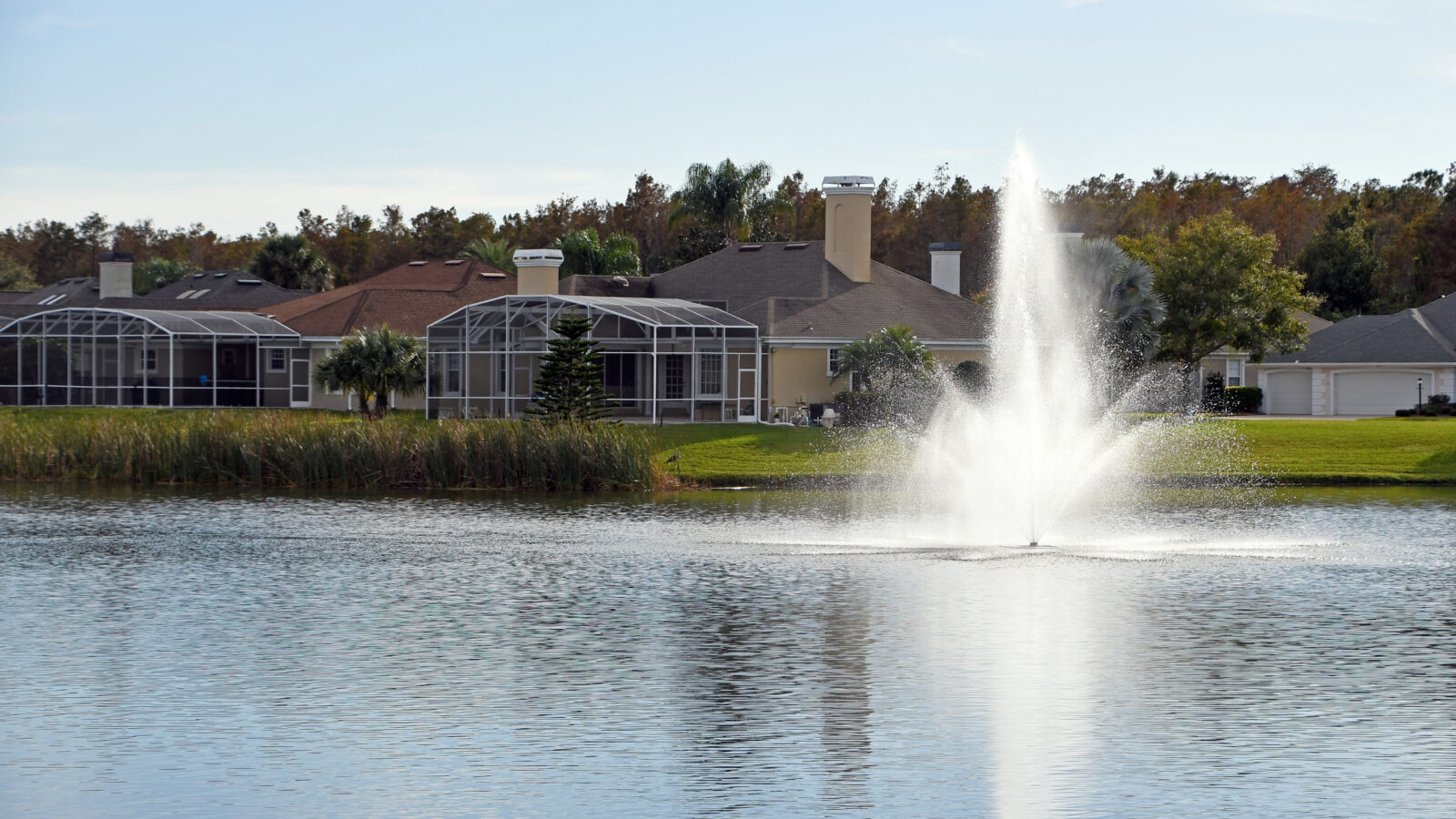
Proactive Lake Management Tips to Naturally Manage Water Quality
Whether you represent an HOA community, a golf course or a municipality, recurring maintenance plays a large role in the responsibilities of your organization. From structural upkeep to landscaping, proactive maintenance is not only necessary, it’s an investment in your assets. Lakes, ponds and stormwater facilities should be approached in the same way.
Our water resources provide aesthetic beauty, recreational opportunities and the crucial collection of stormwater runoff, but they are not permanent. Eventually, they will fill in with sediment, pollutants and organic materials that cause them to shrink and lose depth over time. This is where proactive management comes in to play.
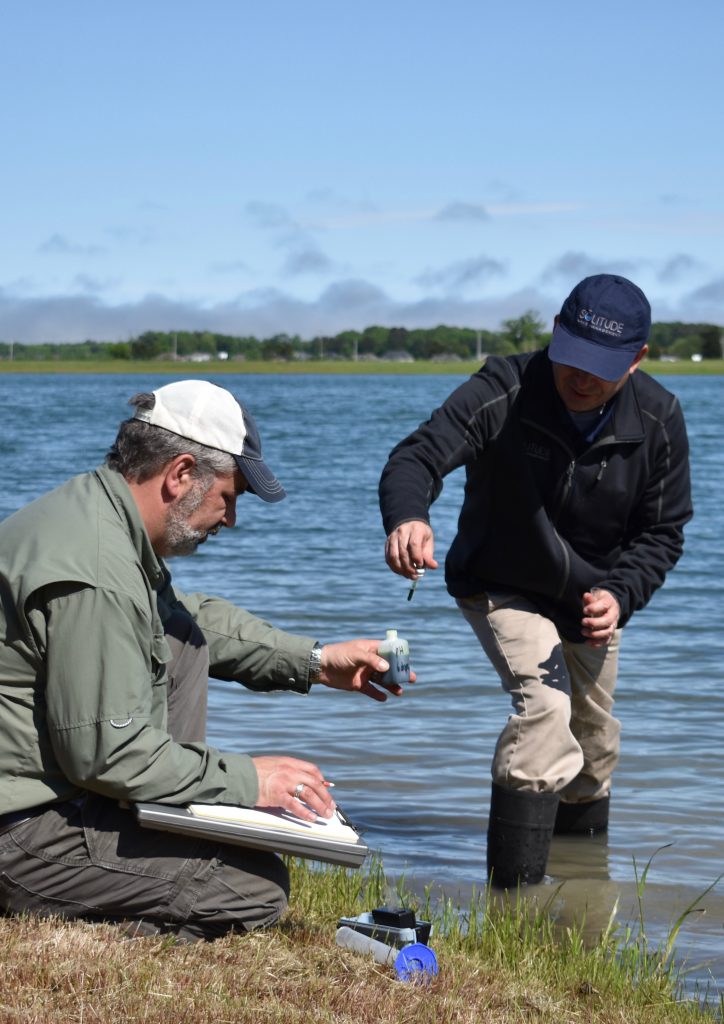
Professional Water Quality Assessments
The first step in any effective management plan is a professional water quality assessment. Think of water sampling like a blood test for your lake or pond; it helps establish a baseline of overall health, reveals areas of potential concern, and helps identify strategies that can be implemented to make positive changes. In addition to analyzing parameters like pH, alkalinity, salinity, water hardness and dissolved oxygen levels, water quality tests identify levels of nitrogen and phosphorous.
How do phosphorus and nitrogen get into lakes?
Phosphorus and nitrogen enter our waterbodies in many ways – through the natural decomposition of leaves and plant matter, fertilizers, pet waste, sediment, and organic pollutants that wash into the waterbody. In healthy levels, these nutrients help grow healthy fish and hearty, native plants. In excess, however, they may fuel nuisance weeds and toxic algae, create undesirable bottom muck and encourage conditions that cause fish kills.
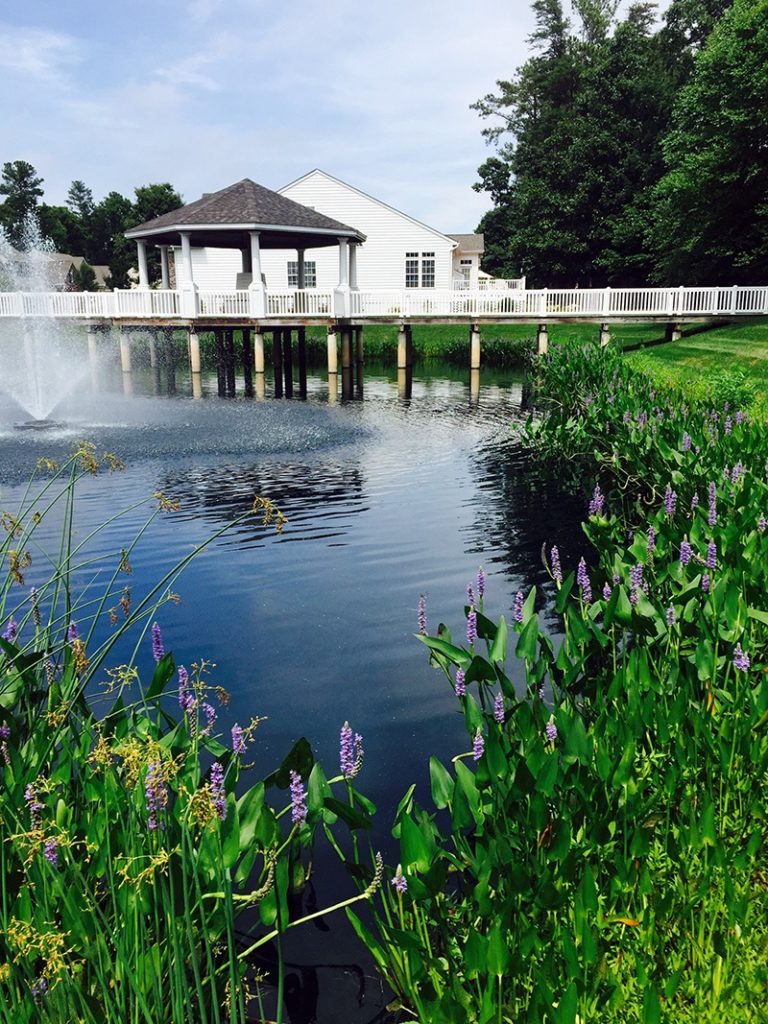
Reduce Nutrient Loading with Vegetative Buffers
To reduce nutrient loading, it’s also important to establish a beneficial vegetative buffer comprised of native grasses, rushes, and flowering plants like pickerelweed and cardinal flower around your waterbody. Ideal buffers should extend at least 3-5 feet around the edge of the shoreline and should be allowed to grow around 18 inches tall. Buffers help naturally filter nutrients before they enter a lake or pond and help stabilize dirt and sediment. However, if erosion becomes a chronic issue, it is possible to repair damage by using bioengineered living shoreline technologies. These repair technologies rebuild the shoreline and help regain lost land while restabilizing the shoreline.
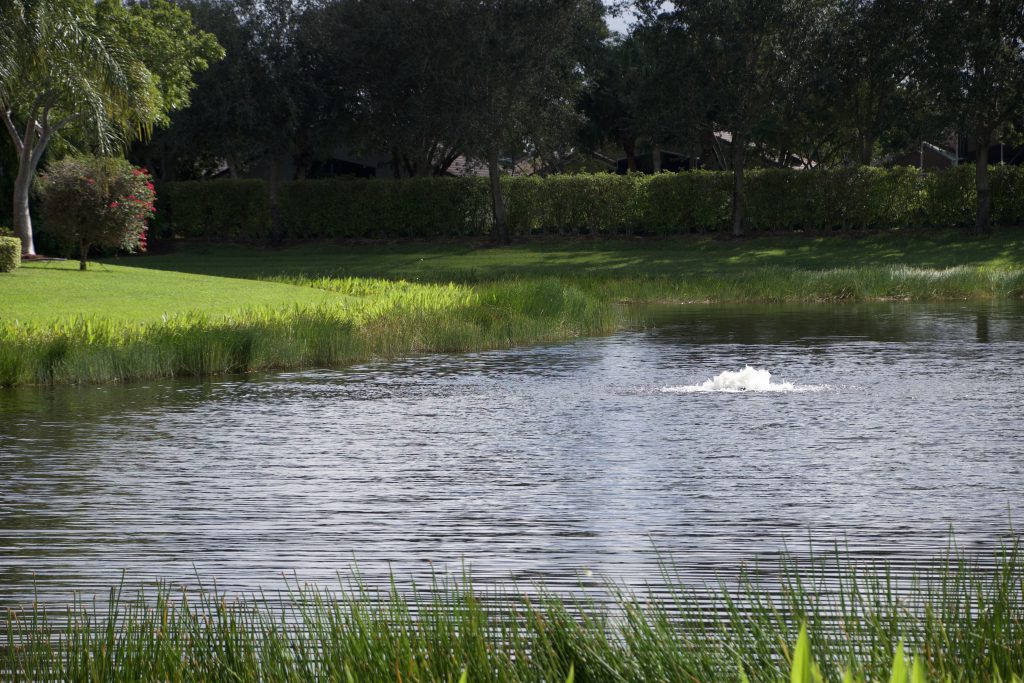
Balance Nutrient Levels with Aeration
The positive benefits of shoreline stabilization can be further enhanced by the introduction of a lake or pond aeration system. Aeration systems are available in many forms, including floating fountains, which spray water into the air for surface aeration, and submersed aerators, which pump air to the bottom of the waterbody to encourage circulation in the water column. Both of these systems create conditions that convert nutrients to forms that cannot sustain algae or aquatic weeds. Likewise, a more premium solution called nanobubble technology can offer long-lasting oxygenation while eliminating undesirable nutrients and toxins present in the waterbody.
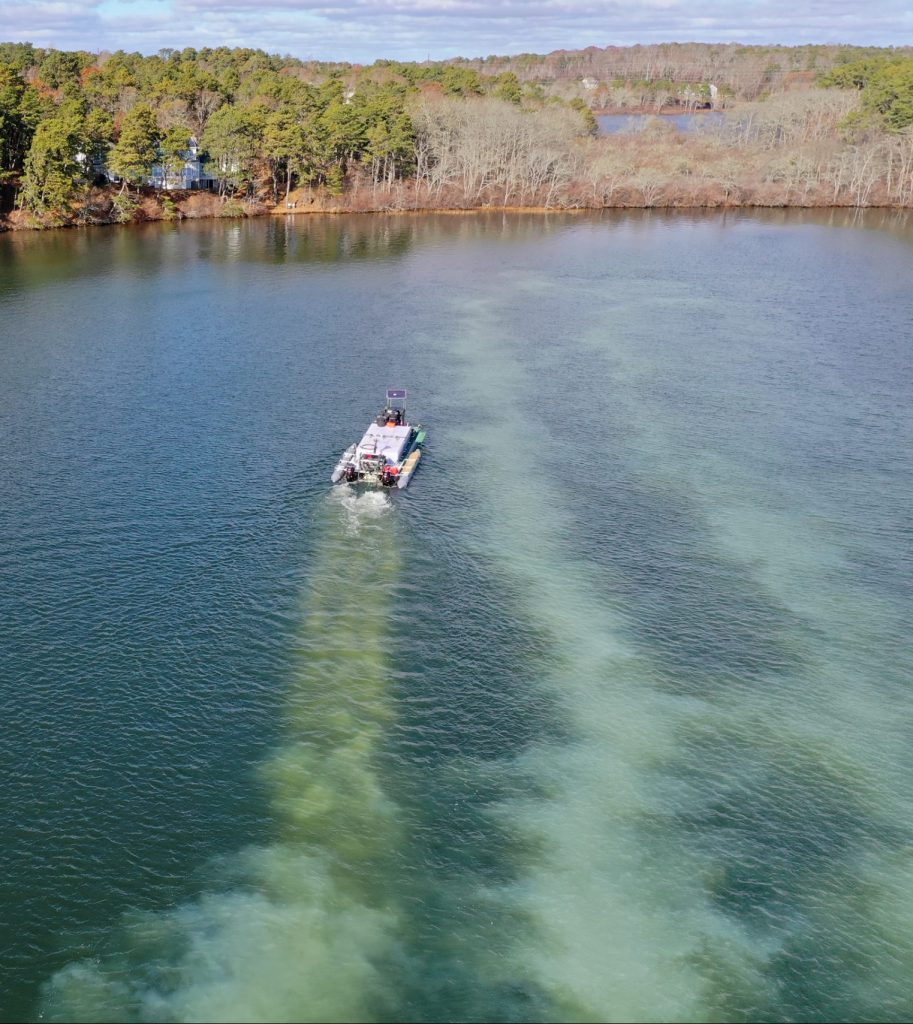
Nutrient Remediation Solutions
Another way to limit algae’s food source is with the application of bacteria and enzymes through a process called biological augmentation. Beneficial bacteria help consume excess pond nutrients and facilitate the degradation of the organic muck that builds up at the bottom of our water resources. For lakes and ponds with chronic nutrient problems, it’s also worth considering the nutrient inactivation benefits provided by products like Phoslock, Alum, and EutroSORB. When applied by a licensed professional, these technologies work to rapidly remove free reactive phosphorus from the water column, restoring balance and improving water clarity.
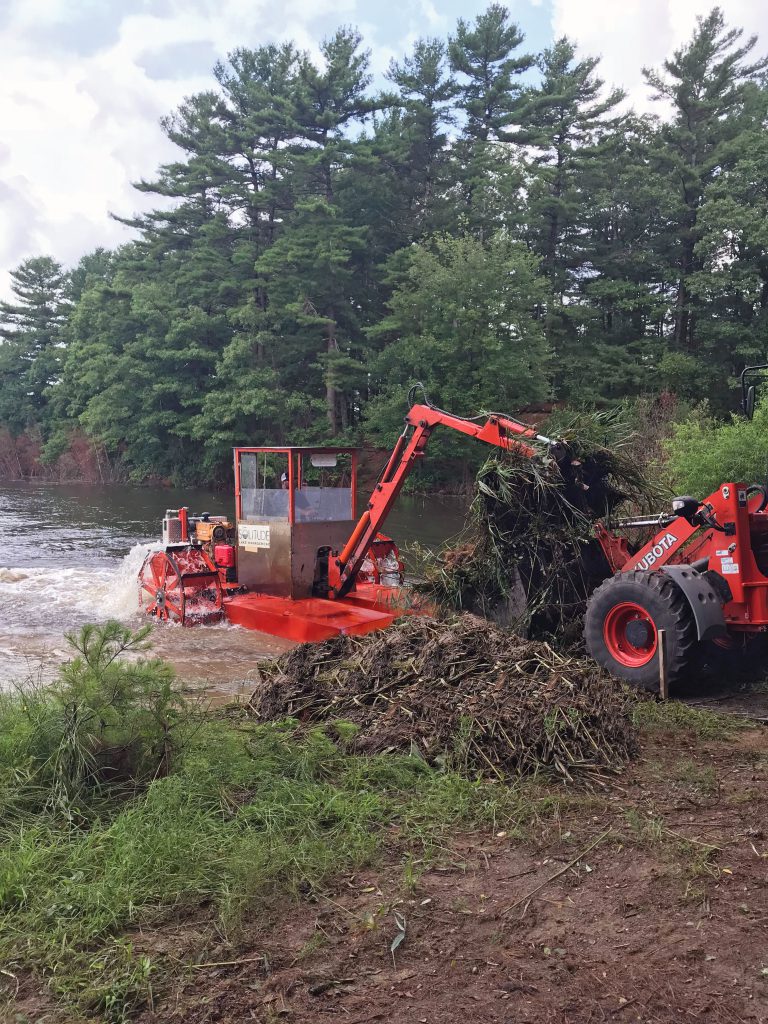
Be Proactive with Lake and Pond Management
Proactive management is simple to implement in lakes and ponds that are already flourishing, but what if your starting point is a waterbody overrun with nuisance algae and invasive vegetation? Vegetation reduction is an important step, and there are many alternatives to traditional pesticide use. New innovations like ProcellaCOR provide the benefits of herbicides without impacting non-targeted species or interfering with recreation.
Physical harvesting and hydro-raking are also suitable for the removal of emergent, floating and submersed vegetation like watershield and curlyleaf pondweed. These methods have no impact on delicate shorelines and can reduce undesirable plants for up to three years. Physical plant removal can also prolong invasive dredging. Dredging is often the costliest expense a community will ever face and is considered a last resort option to restore valuable depth and volume to an aging lake or pond.

Maintain A Balanced Ecosystem with Ongoing Maintenance
Whether your waterbody appears to be the picture of health or is overrun with the undesirable symptoms of nutrient loading, it’s important to remember that the ecosystem is in a constant state of change. By tuning in to the unique needs of your waterbody through routine monitoring and maintenance, it is possible to cost-effectively maintain a beautiful, healthy and long-lasting aquatic ecosystem for your community members, visitors and family to appreciate all year long.
The Benefits of Aeration
SOLitude Lake Management is an environmental firm committed to providing full service solutions that improve water quality, enhance beauty, preserve natural resources, and reduce our environmental footprint. Our services include lake, pond, wetland and fisheries management programs, algae and aquatic weed control, mechanical harvesting, hydro-raking, installation and maintenance of fountains and aeration systems, water quality testing and restoration, nutrient remediation, bathymetry, lake vegetation studies, biological assessments, habitat assessments, invasive species management and nuisance wildlife management. Services, consulting and aquatic products are available to clients nationwide, including homeowners associations, multi-family and apartment communities, golf courses, commercial developments, ranches, private landowners, reservoirs, recreational and public lakes, municipalities, parks, and state and federal agencies. Learn more about SOLitude Lake Management and purchase products at www.solitudelakemanagement.com.









